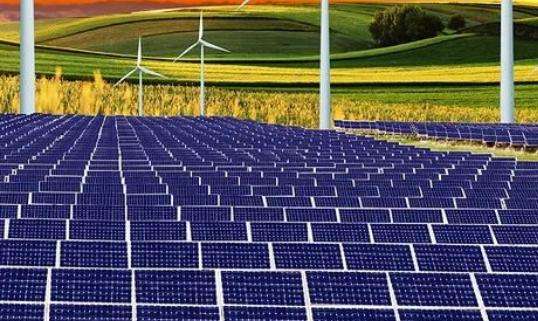Brand model: iPhone 14
System: iOS 16.1.2
It is uncertain how many kilowatt-hours of electricity a 120-meter blade generates , it depends on the specific power generation situation. Generally speaking, assuming that the blade speed is 60 rpm, the electricity generated by a 120-meter blade is about 20 kWh. The wind turbine converts the wind power into electrical energy, and then converts it into usable electrical energy through inversion. Then the usable electrical energy can be used to use electronic equipment.
The principle of wind power generation is to use wind power to drive the windmill blades to rotate, and then use a speed increaser to increase the speed of rotation to prompt the generator to generate electricity. Simply put, wind power generation is the process of converting wind energy into mechanical energy, and then converting mechanical energy into electrical energy. The blade is composed of many special-shaped interfaces of different sizes and shapes from the bottom to the tip. When the fluid flows through the blade, it will generate lift, which produces the most basic rotation.
A wind turbine consists of a nose, a rotor, a tail, and blades. The functions of each part are: the blades are used to receive wind power and convert it into electrical energy through the nose; the tail keeps the blades facing the direction of the incoming wind. Thus, the maximum wind energy is obtained; the swivel allows the nose to rotate flexibly to realize the direction adjustment function of the tail; the rotor of the nose is a permanent magnet, and the stator winding cuts the magnetic lines of force to generate electrical energy.
What is the torque at the blades of a 10KW wind turbine?
A large wind turbine fan can generate 0.1 kWh of electricity in one revolution.
A 100kw wind turbine generates 0.1 kWh of electricity per revolution at rated speed. Usually, wind turbines from 50W to 300W are all 12V, and wind turbines from 300W to 800W are all 24V wind turbines. Above 800W, all wind turbines are above 36V.
The speed of the wind wheel is related to the speed of the wind, the size of the wind wheel, the number and design of the blades and other factors. According to statistics, the speed of wind turbines currently on the market is generally between 10-20 rpm, and the speed of large wind turbines is about 15 rpm.
The power generation of wind power is mainly affected by the wind speed and the rotation speed of the wind wheel. Generally speaking, when the wind speed is low, the rotation speed of the wind wheel will be slower, and the power generation will be reduced accordingly; when the wind speed is high, the speed of the wind wheel will also increase, and the power generation will also increase accordingly.
Development Trends of Wind Power
In the future, the development of wind power will be more intelligent, efficient, low-carbon, digital, etc.direction development. In terms of technology, the future will strengthen the reliability, safety and stability of wind turbines, improve wind energy conversion efficiency, and make full use of digital technology and Internet of Things technology to achieve intelligent management and operation of wind power generation.
In terms of policies, support and policy guidance for clean energy will be strengthened in the future to improve the market competitiveness and sustainable development of wind power. In practical applications, the power generation of wind power will be affected by many factors, such as topography, climate environment, equipment maintenance, etc. Therefore, the actual power generation of wind power may have certain fluctuations.
Since the speed ratio is 75, the blade speed is 20 rpm. The relationship between torque and power is T≈9.55P/n. (Note that the units are: Newton * meter, watt, revolution per minute) I won't push it down here. If you are interested, you can search it on Baidu. According to the above formula, the torque T=9.55*10000/20=4775Nm can be calculated. This is just a theoretical calculation, ignoring friction, iron loss, and copper loss.














